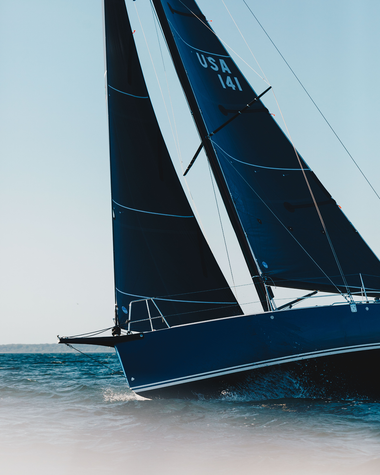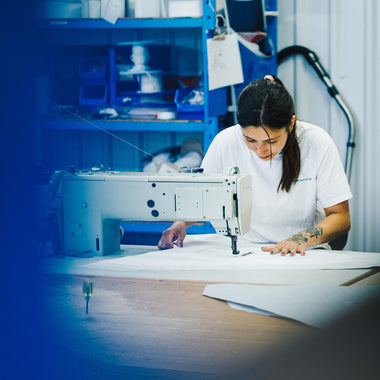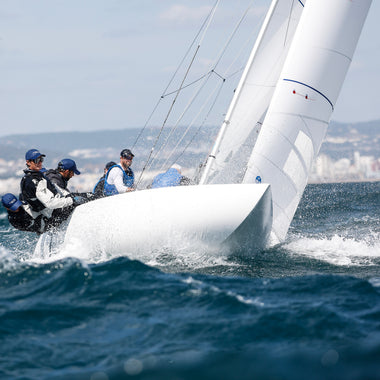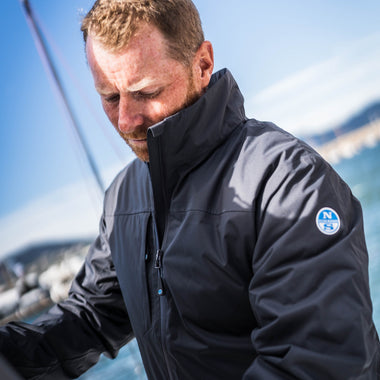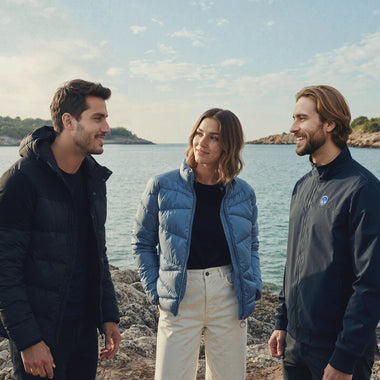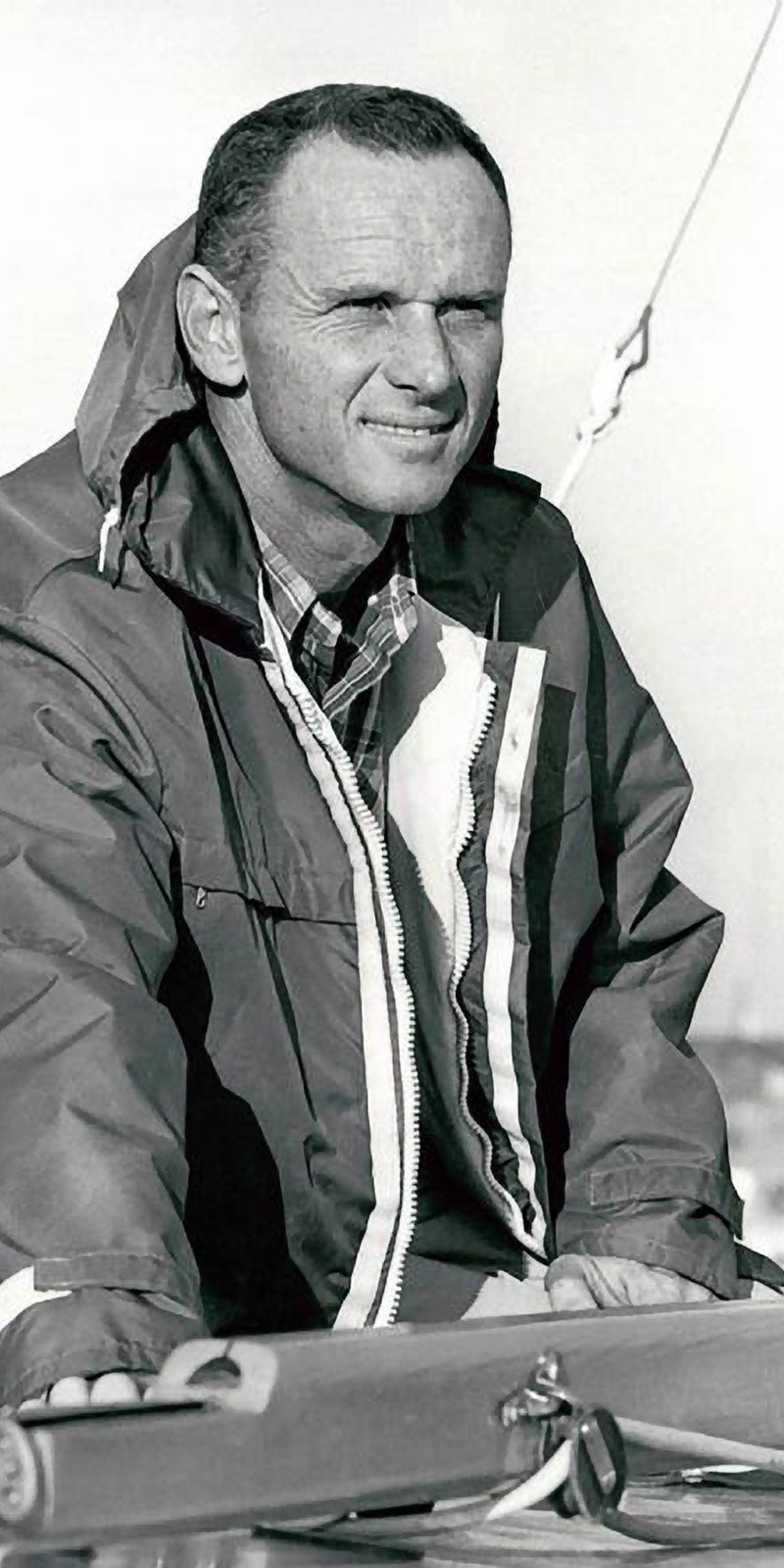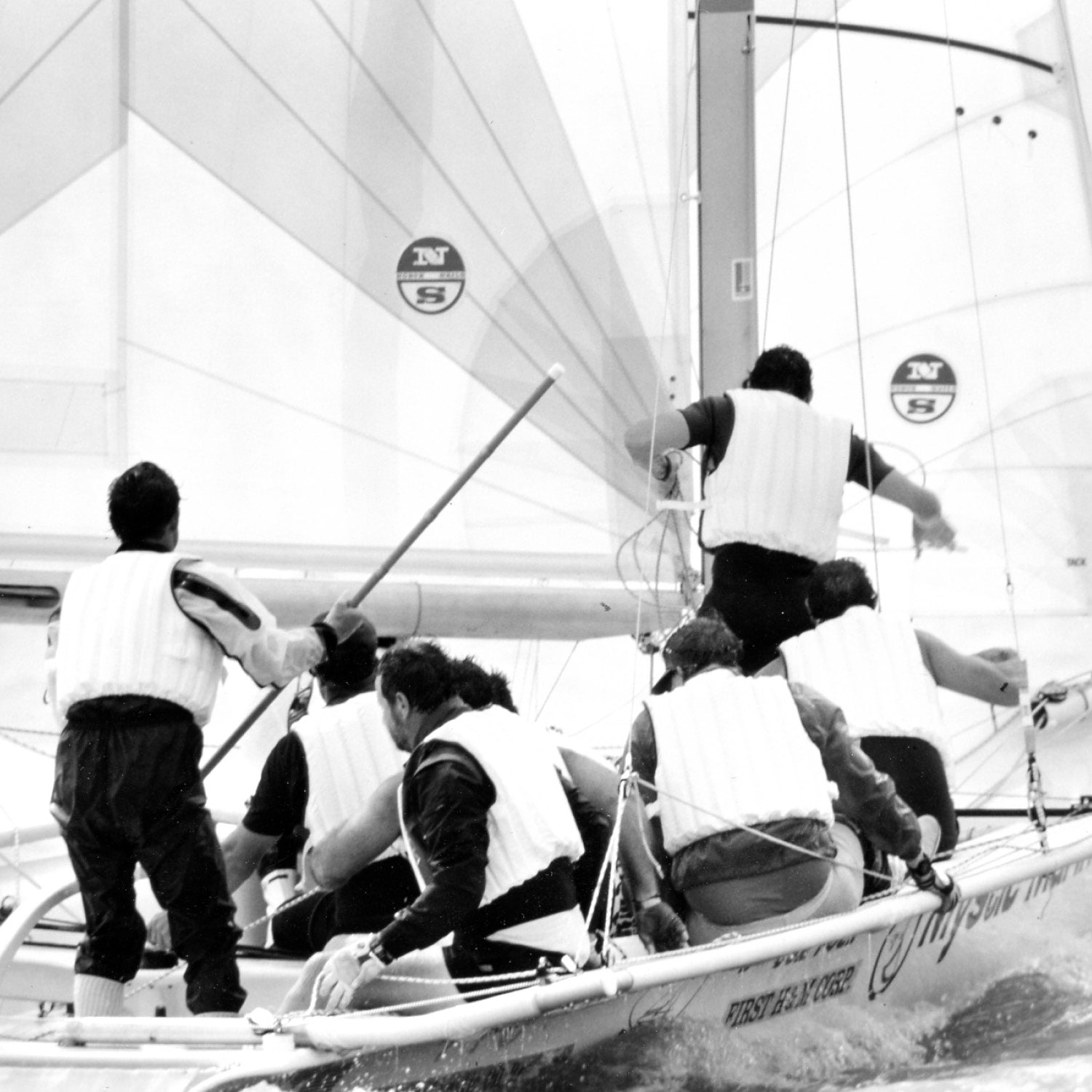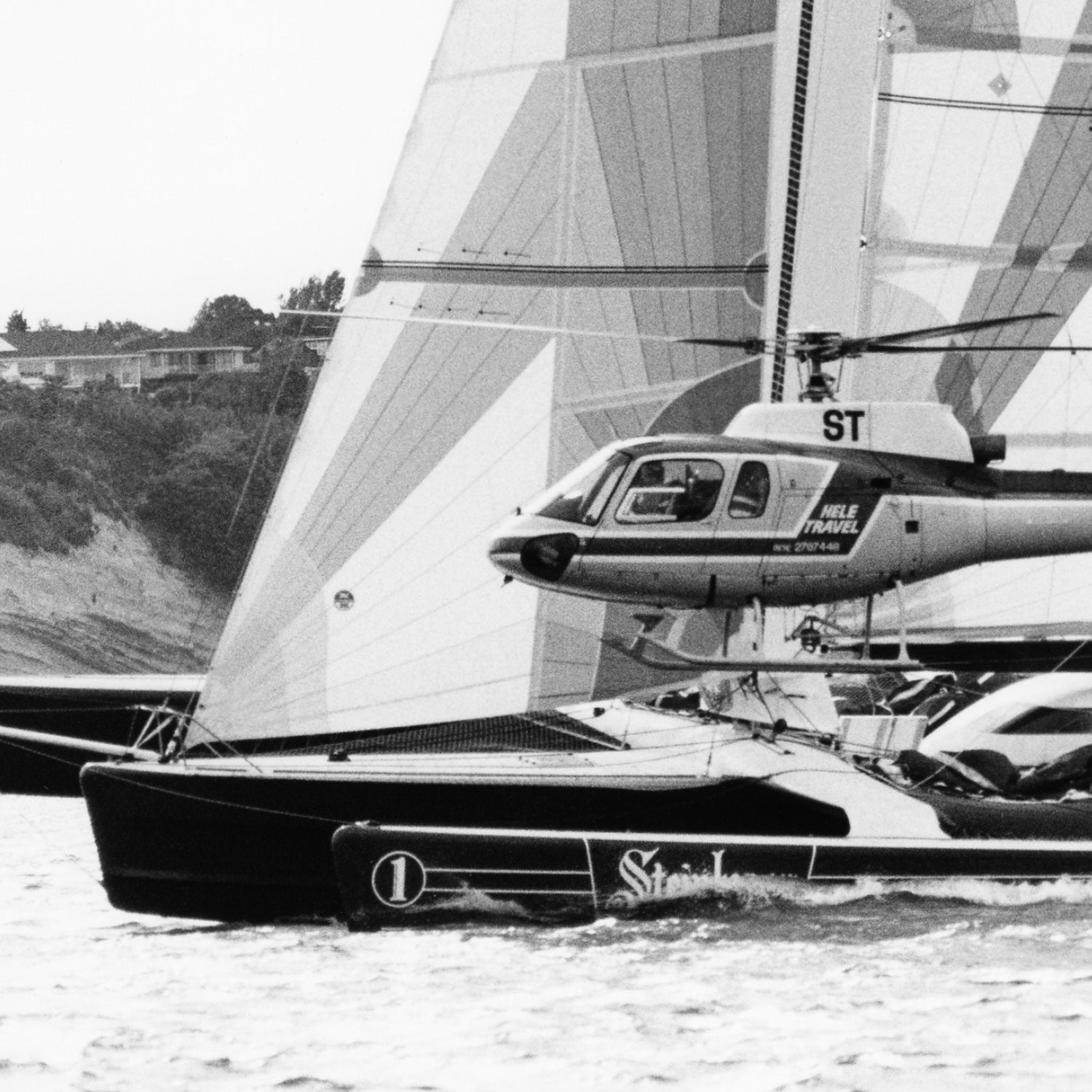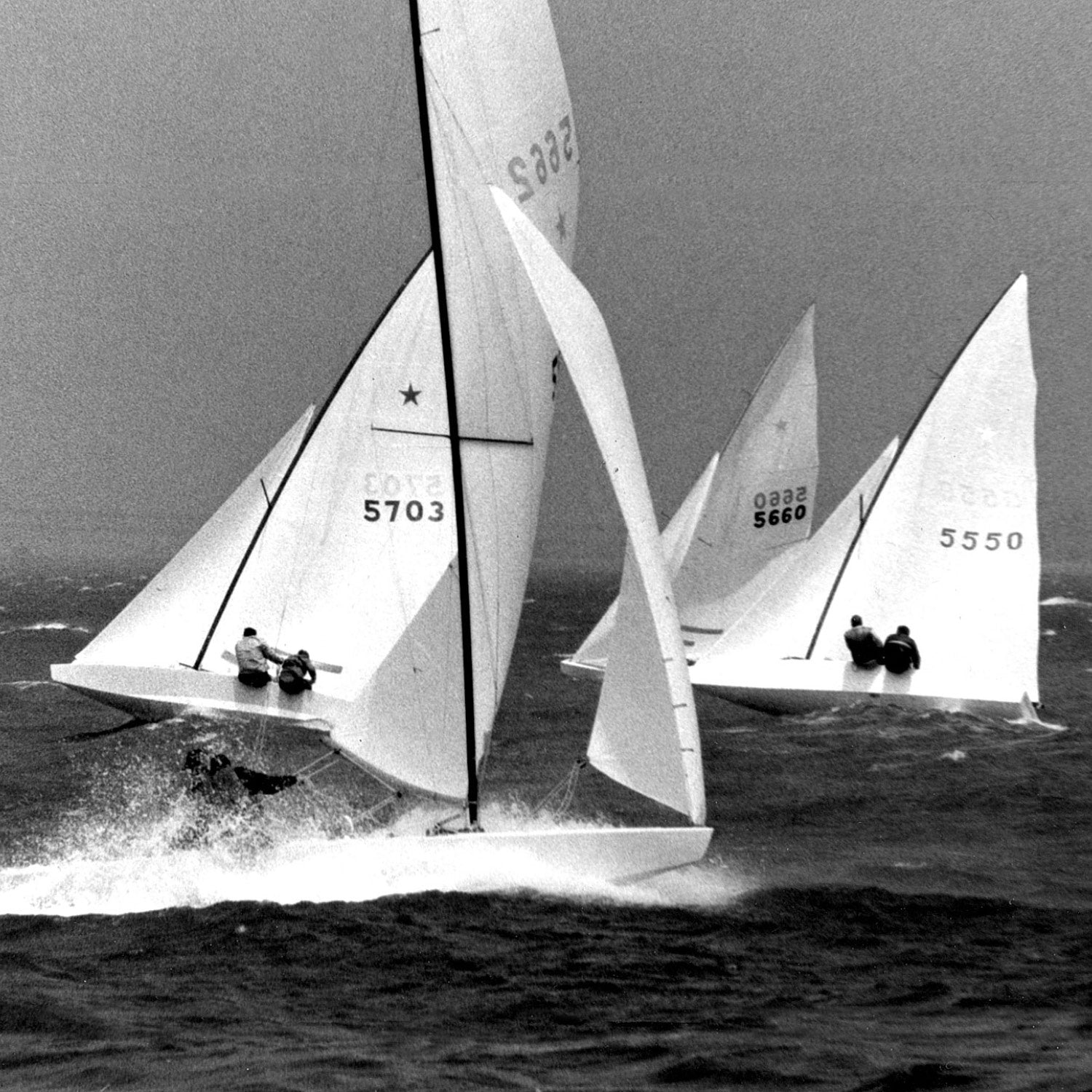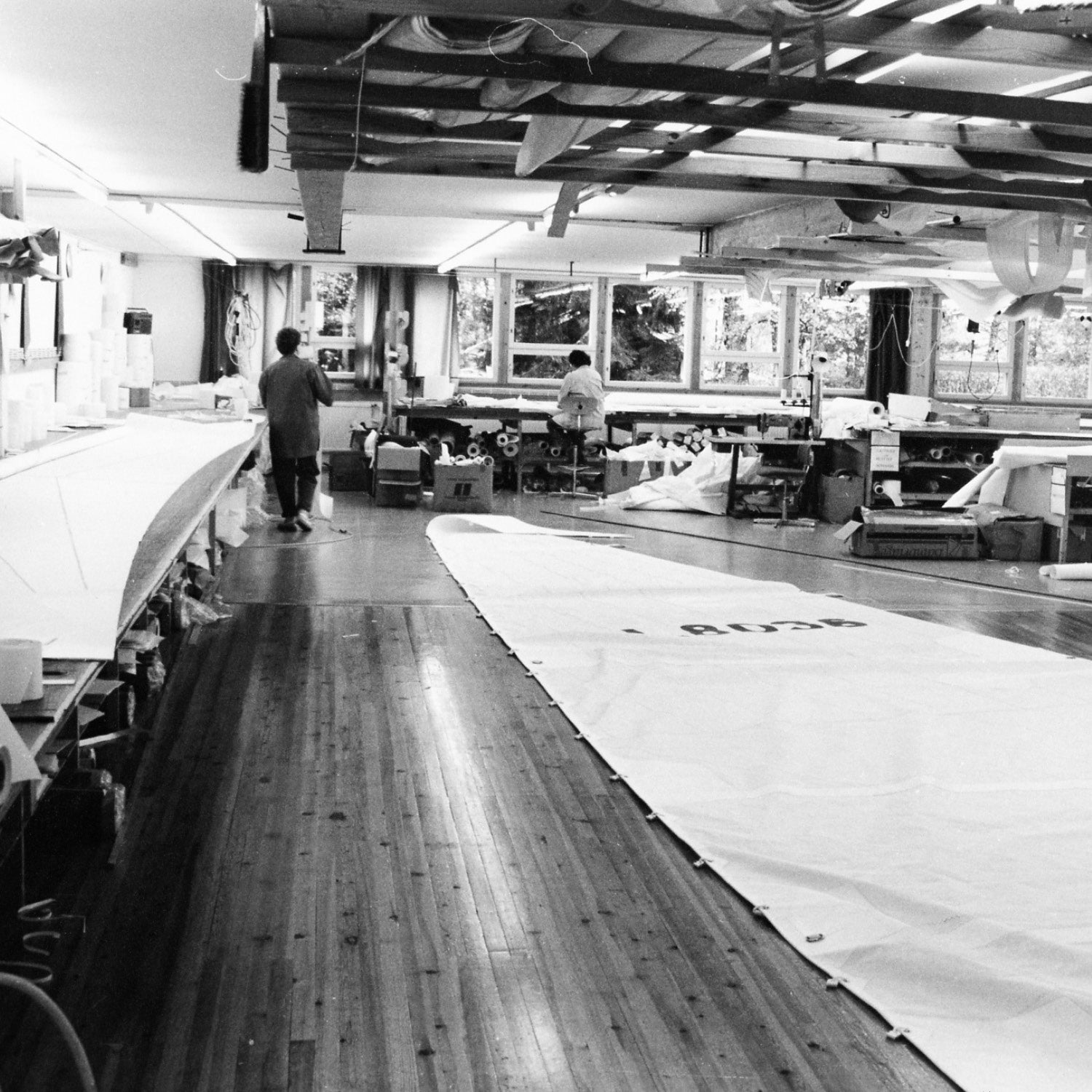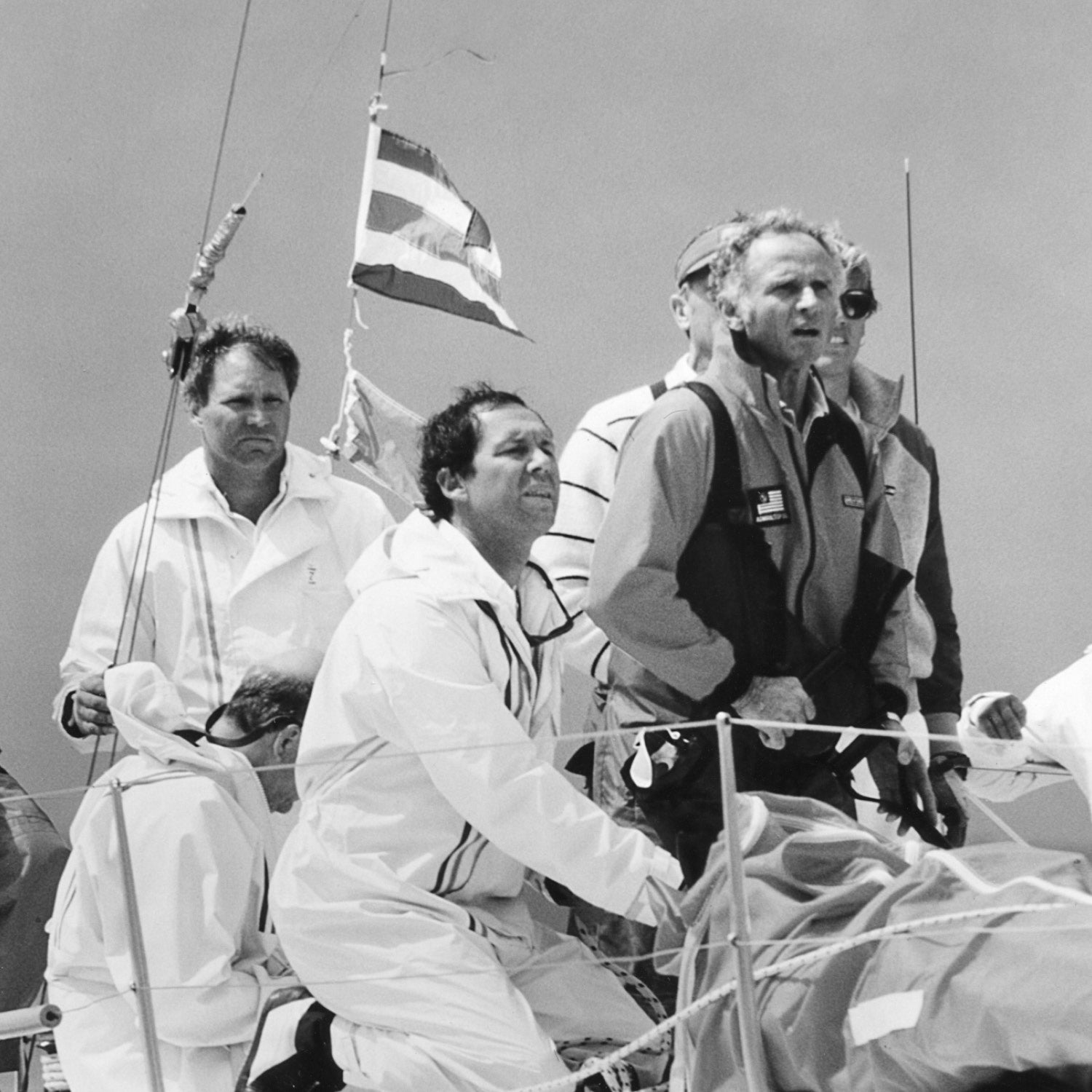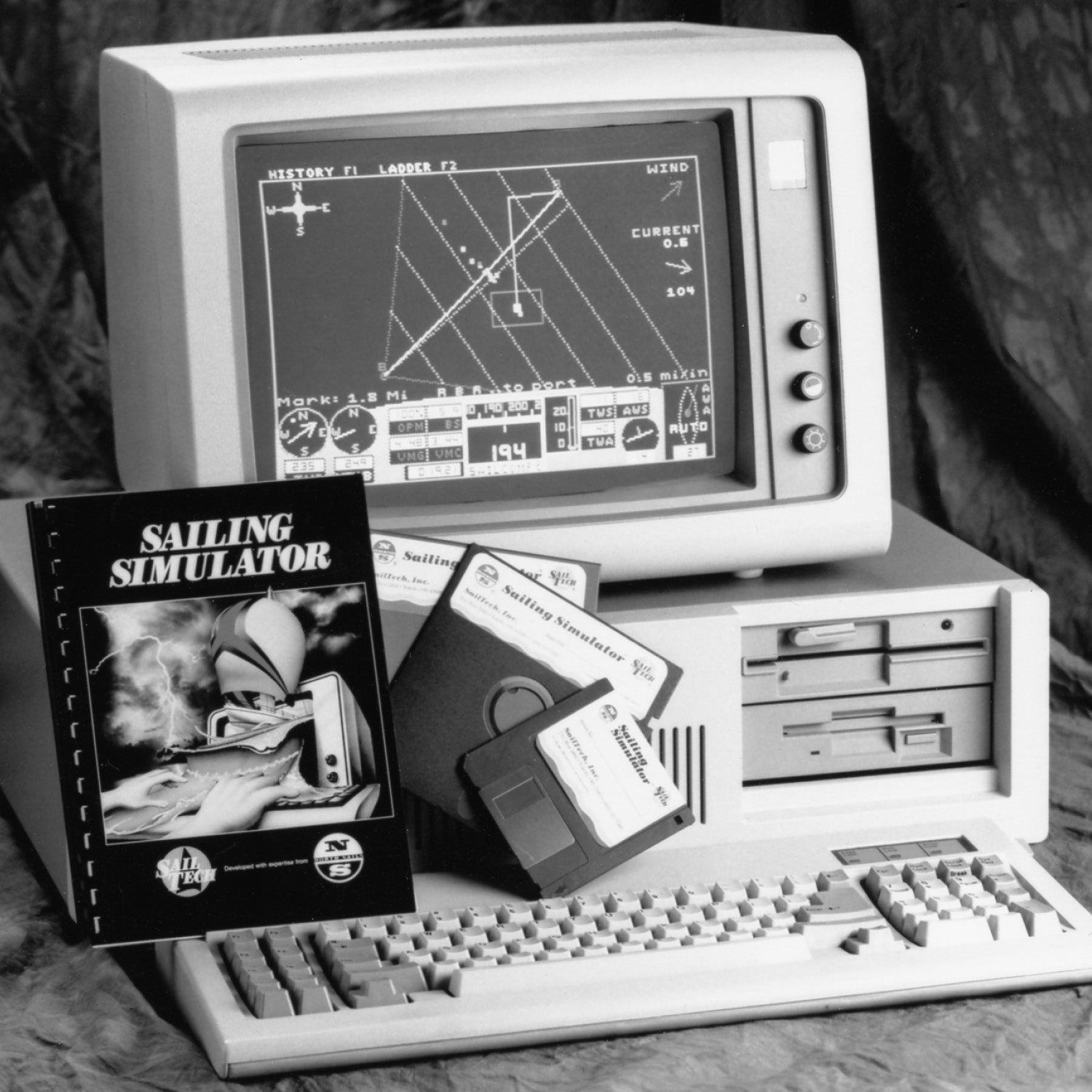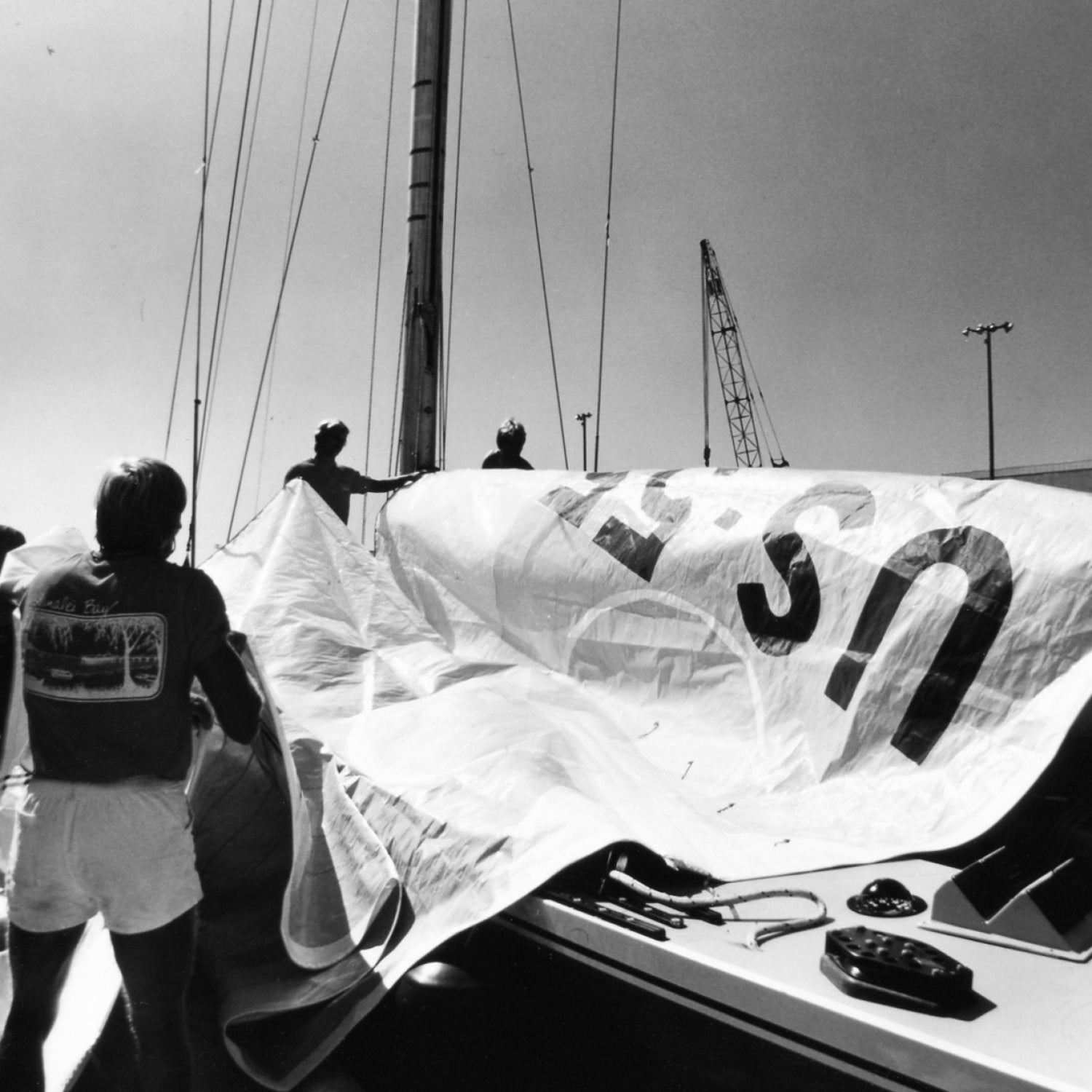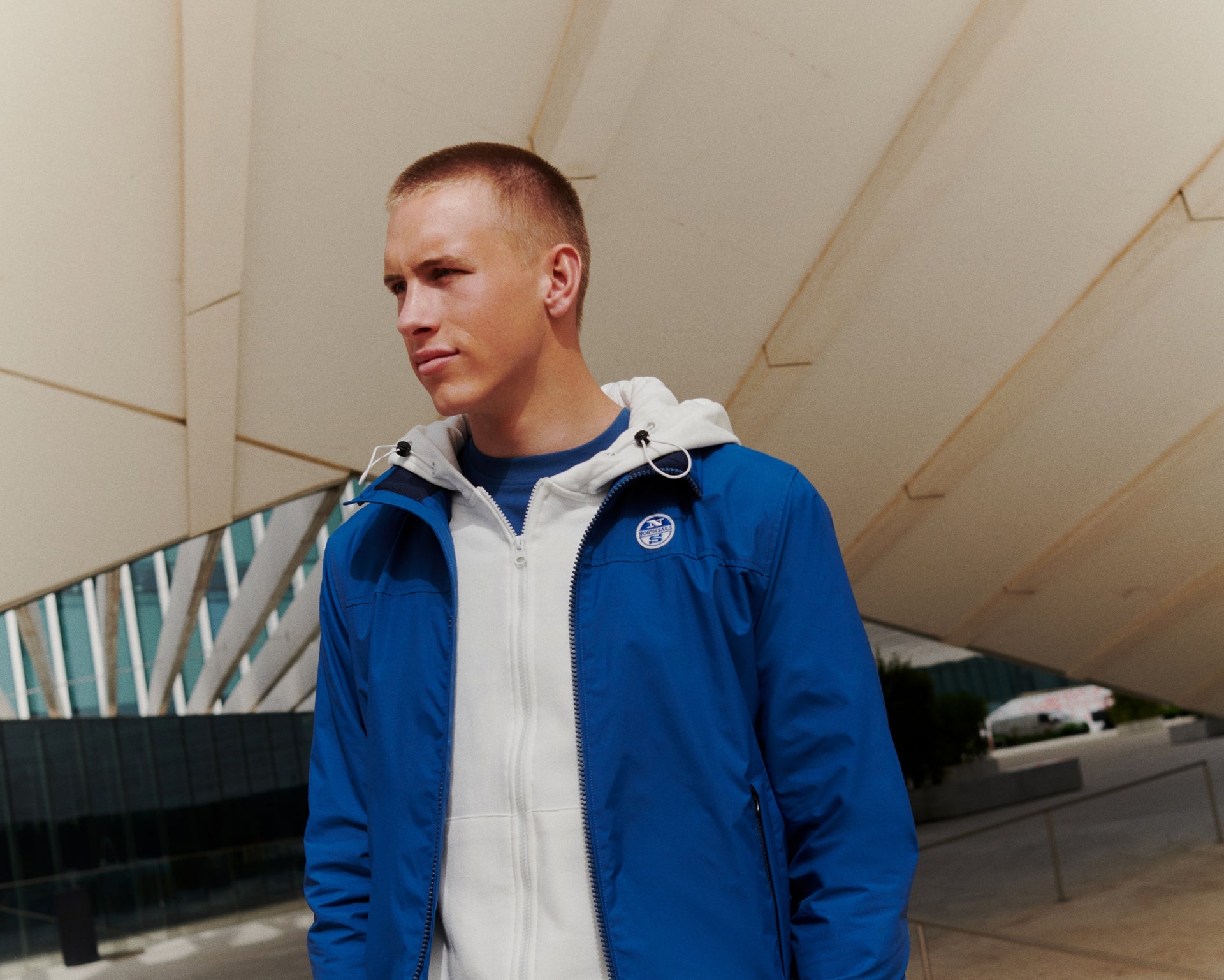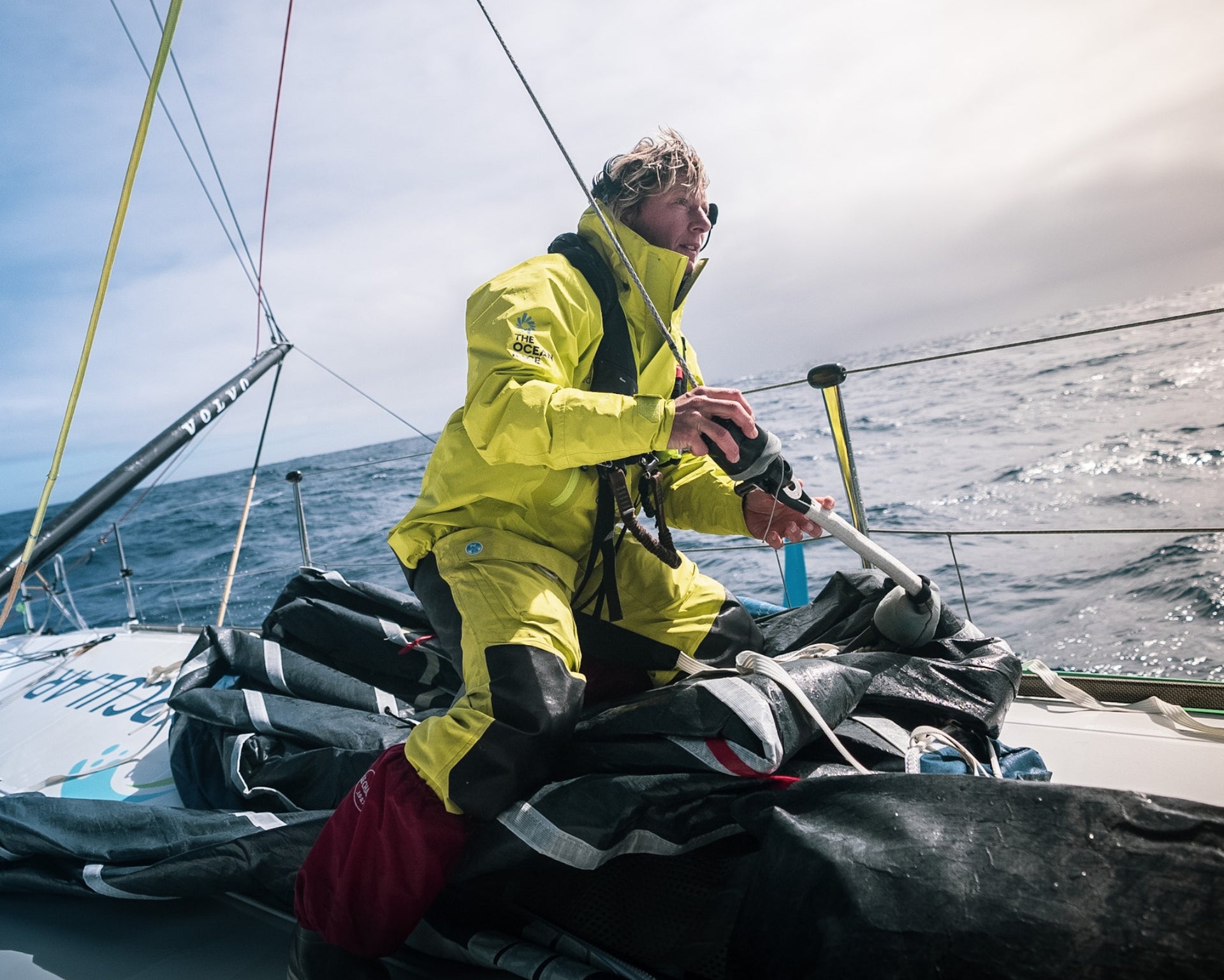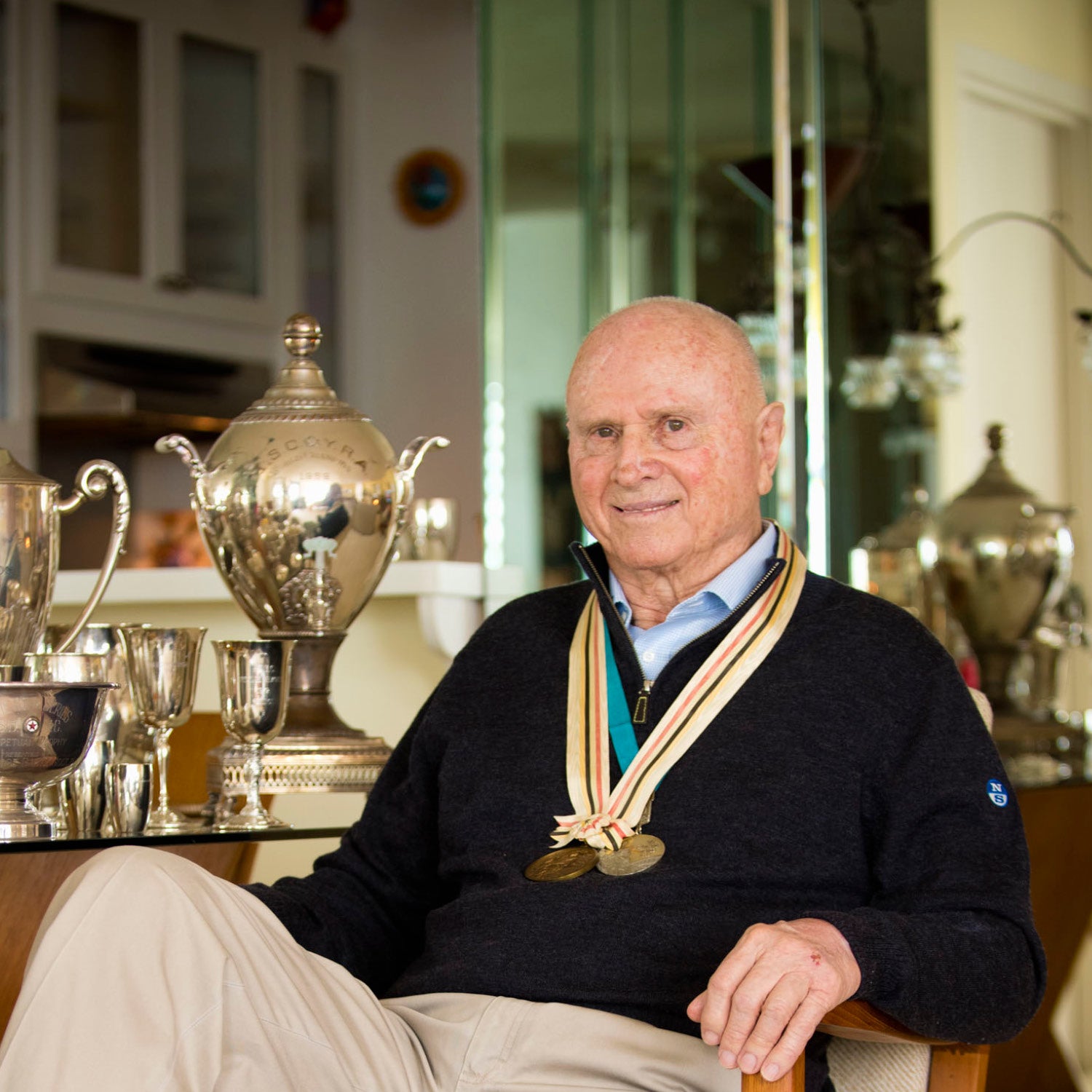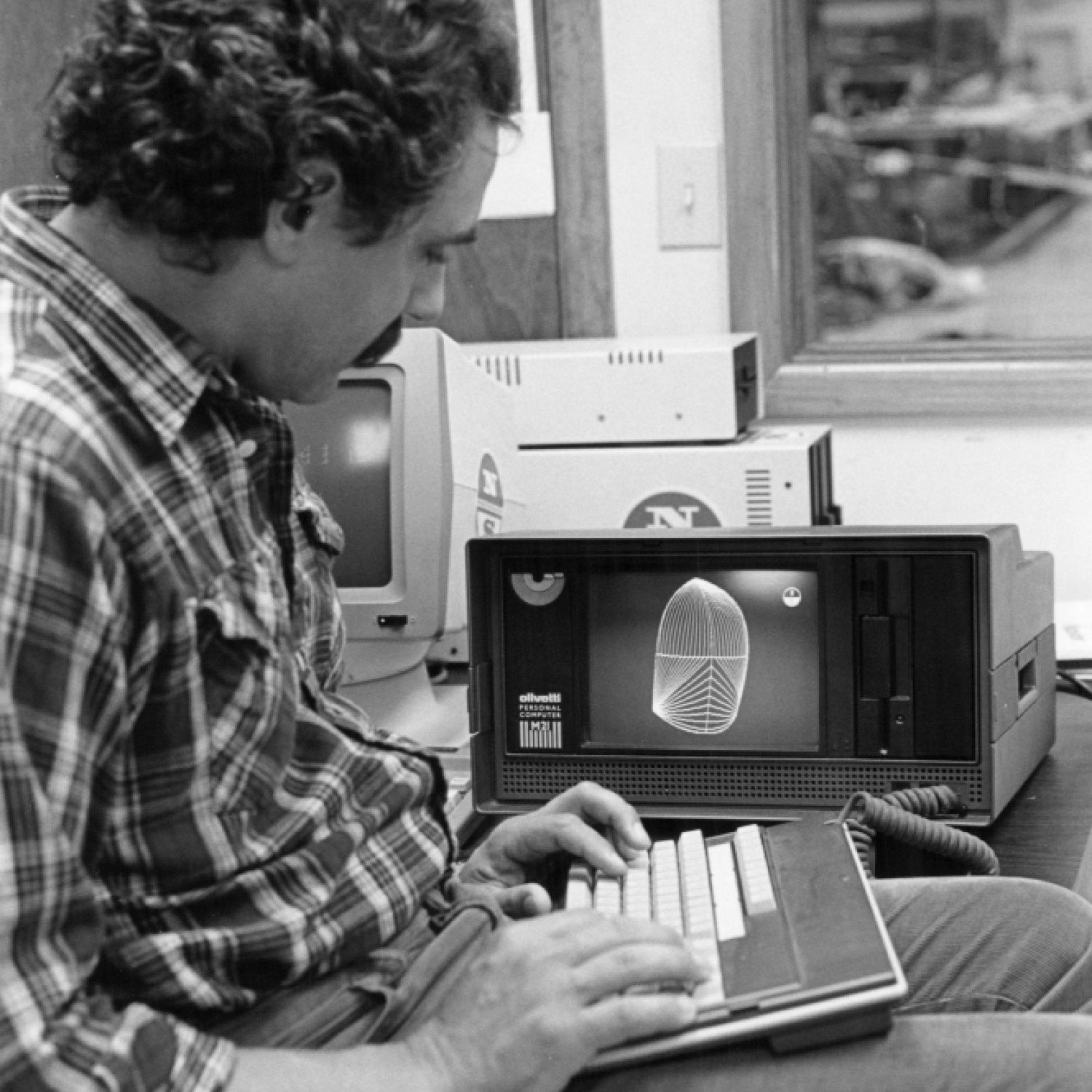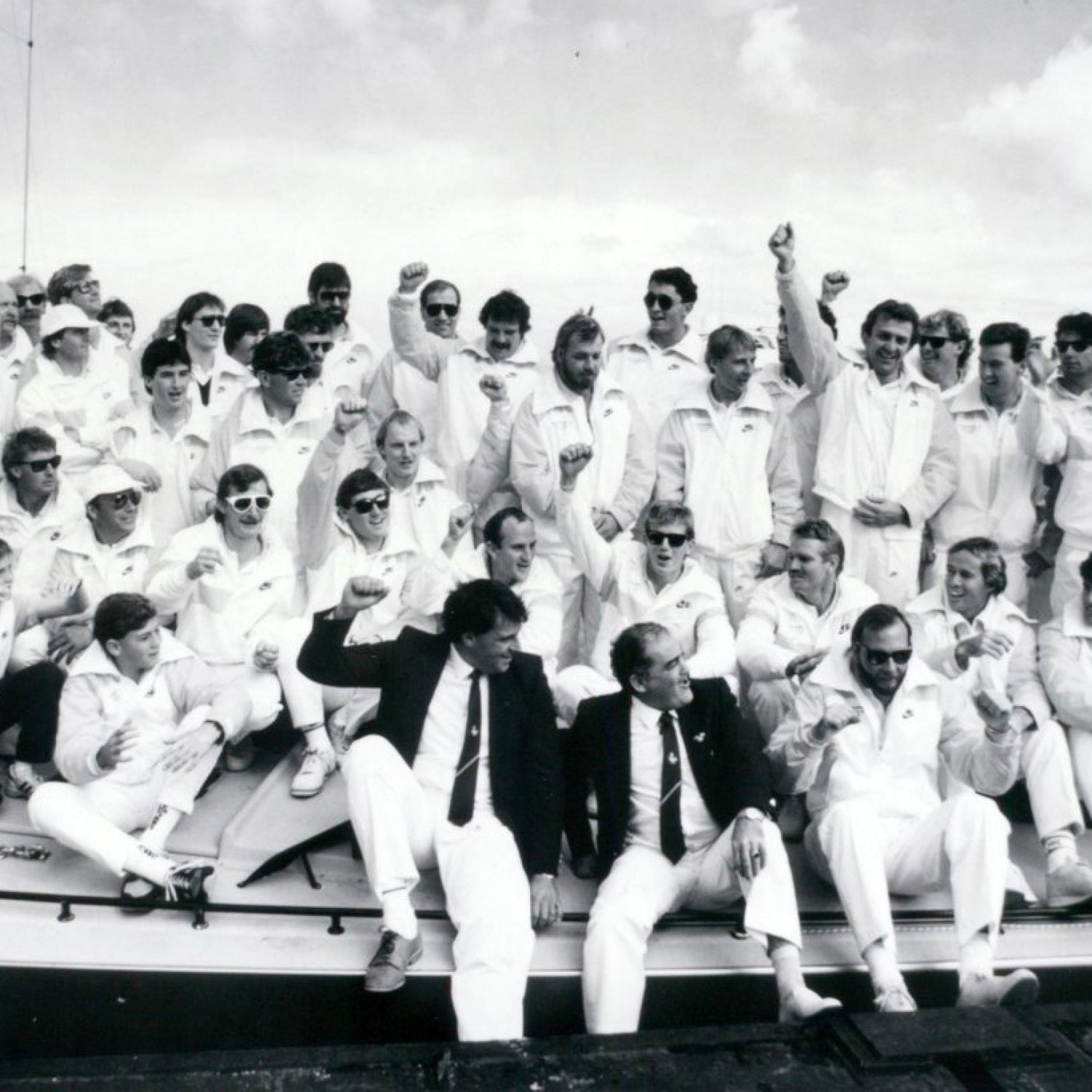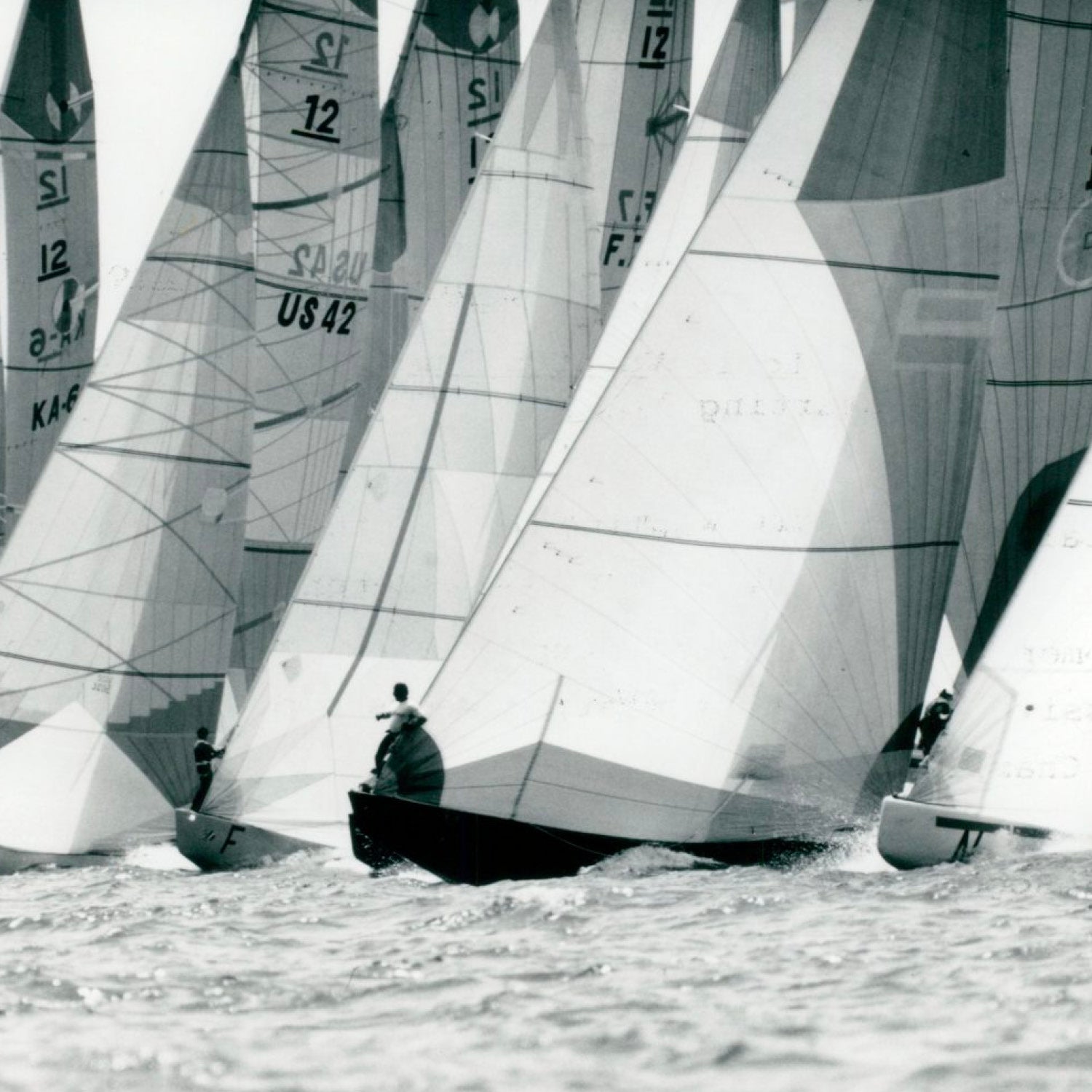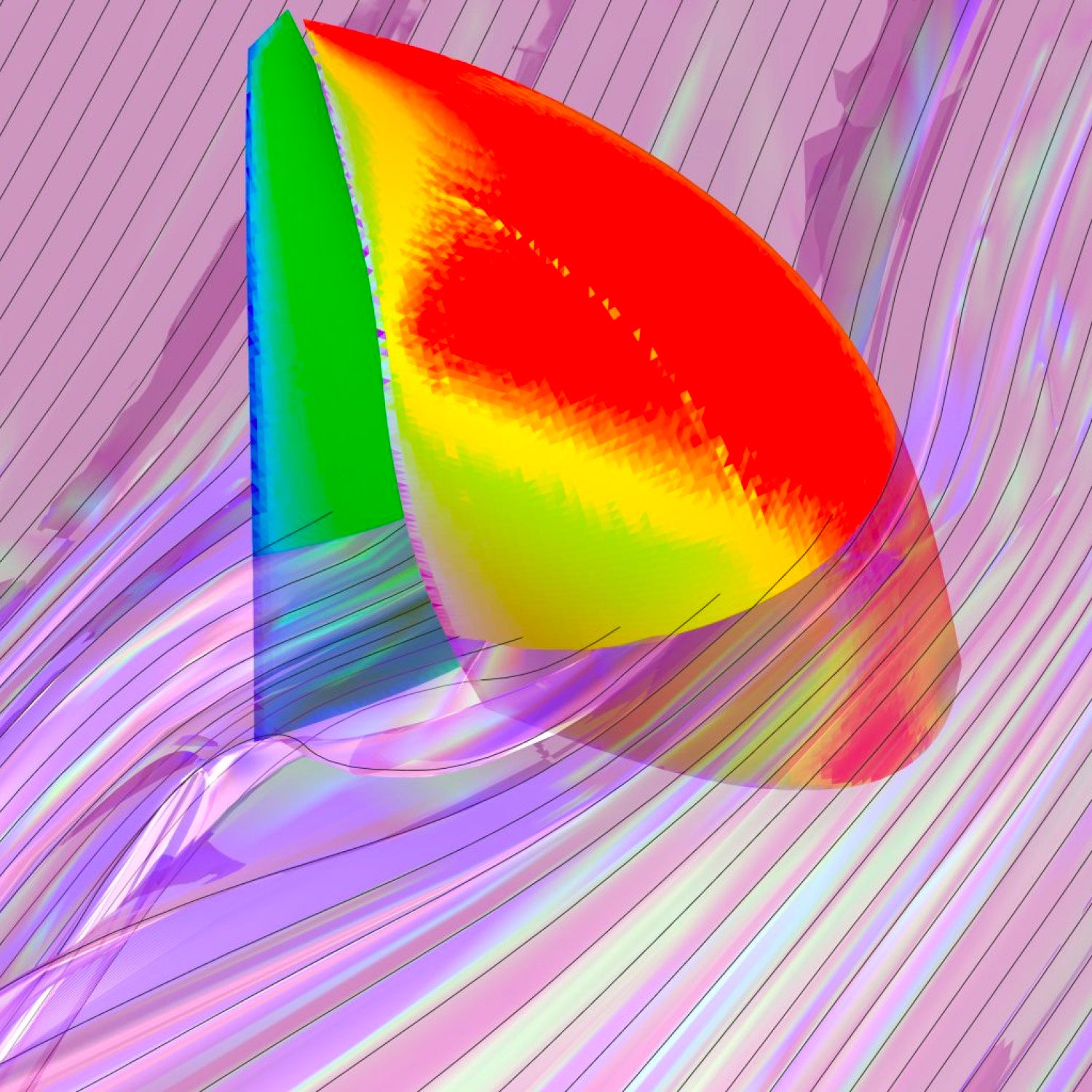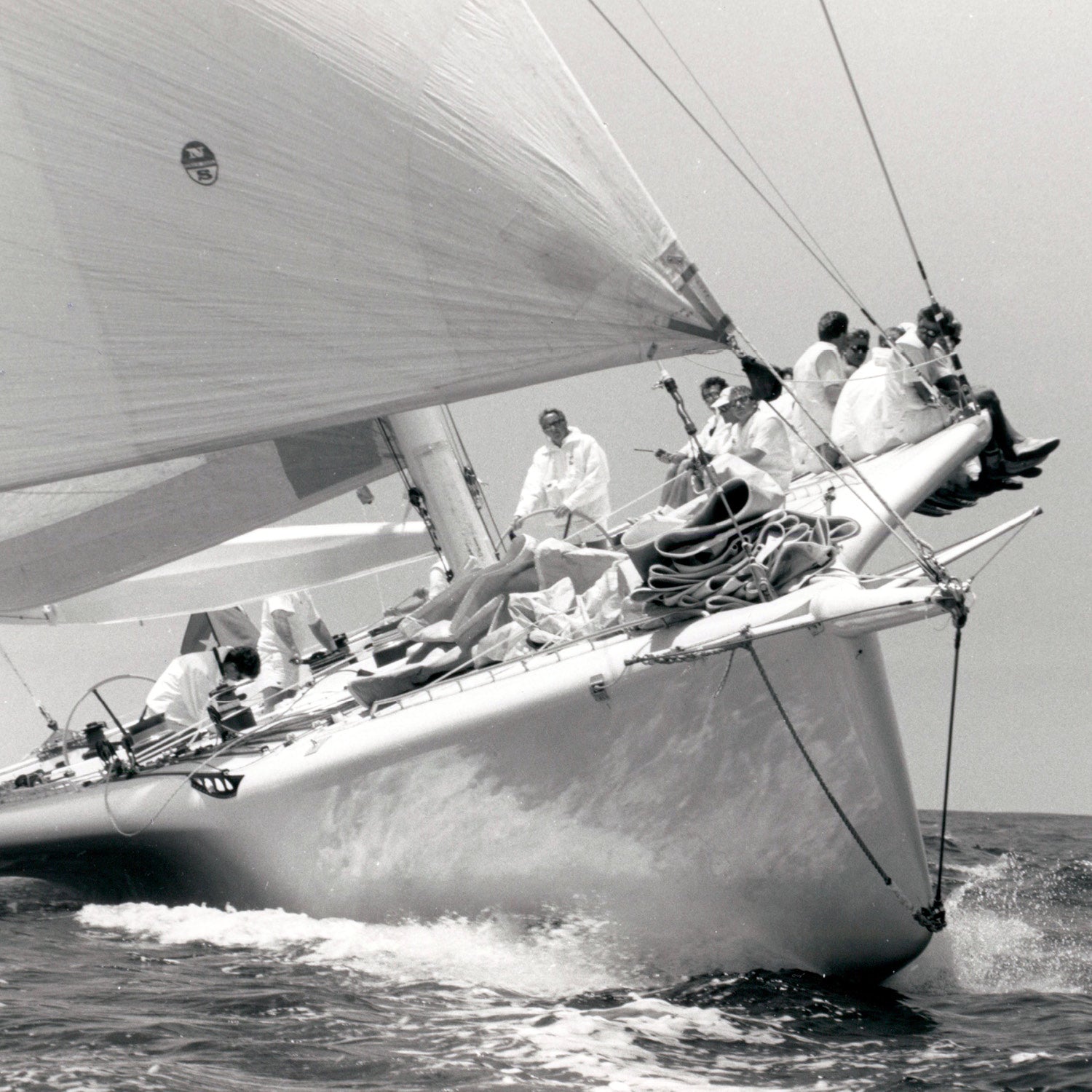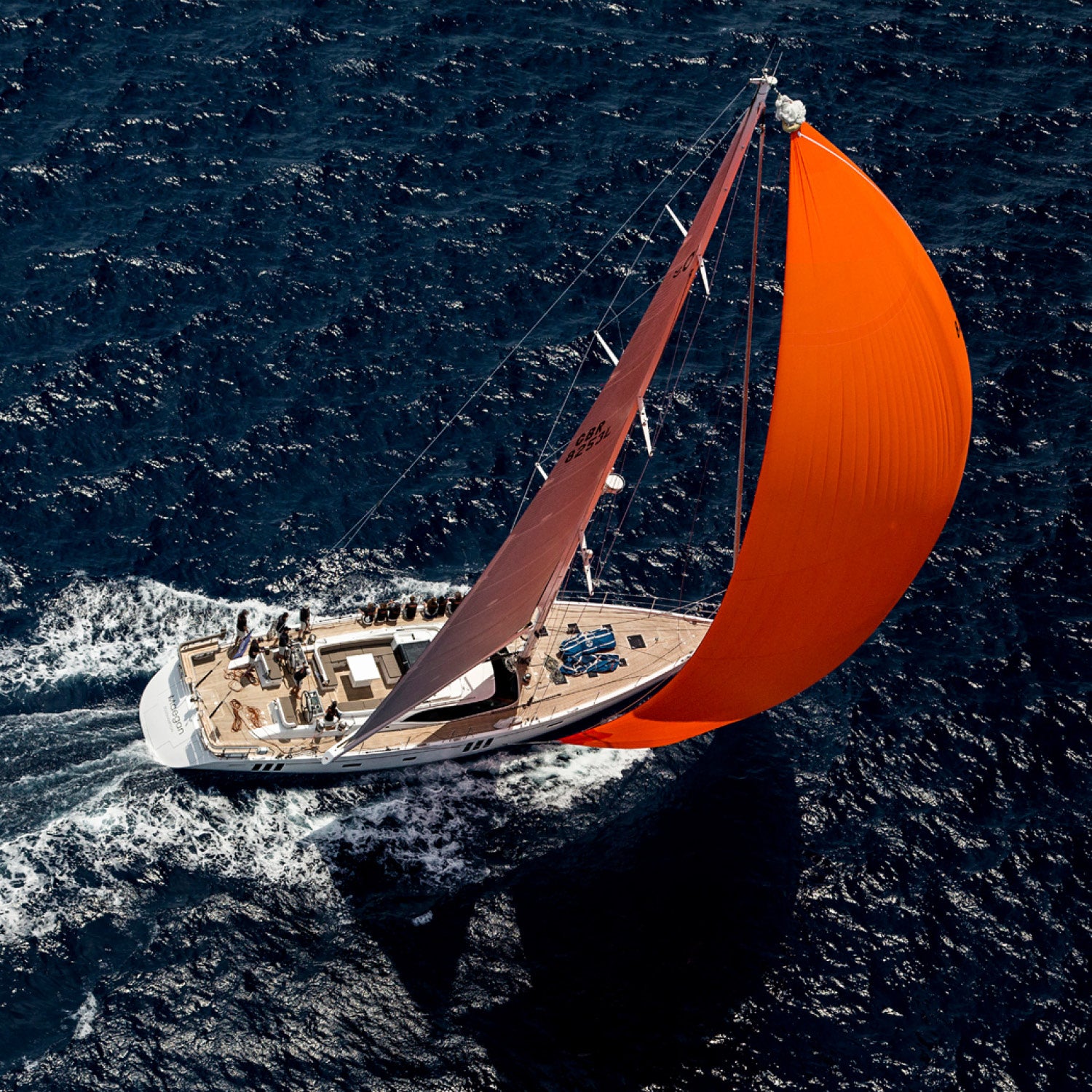In 1957, North Sails founder Lowell North set out to make the best and fastest racing sails the world had ever seen. He succeeded, and went on to reshape sailing forever. Today, whether it’s for an America’s Cup winner, a Vendée Globe champion, Olympic superstar, or weekend day-sailor, every sail we make is born from a champion spirit and pure dedication to the sport we love.
Lowell’s enduring legacy is the combination of leading-edge technology and high-performance materials, which also shaped the first North Sails Apparel collection that launched in 1989 and North Sails Actionsports that followed.
"You make history by looking ahead." — Lowell North
SAILMAKING
SHAPING SAILING SINCE 1957
You can imagine the future or make it. Lowell North went one better—he led it.
When he started North Sails, his philosophy was simple: Get the best people and commit yourself to making the best product. Be clear, creative, methodical, and competitive in spirit. Go beyond your wildest imagination.
For over six decades, teams powered by North Sails have achieved remarkable results. Along with sailing's most prestigious podiums, our successes—from offshore to inshore to one design—highlight 100s of projects powered by collaboration between our designers, manufacturers, and sail experts worldwide. We all benefit and we all learn, as do the people who choose North.
You can imagine the future or make it. Lowell North went one better—he led it.
When he started North Sails, his philosophy was simple: Get the best people and commit yourself to making the best product. Be clear, creative, methodical, and competitive in spirit. Go beyond your wildest imagination.
For over six decades, teams powered by North Sails have achieved remarkable results. Along with sailing's most prestigious podiums, our successes—from offshore to inshore to one design—highlight 100s of projects powered by collaboration between our designers, manufacturers, and sail experts worldwide. We all benefit and we all learn, as do the people who choose North.
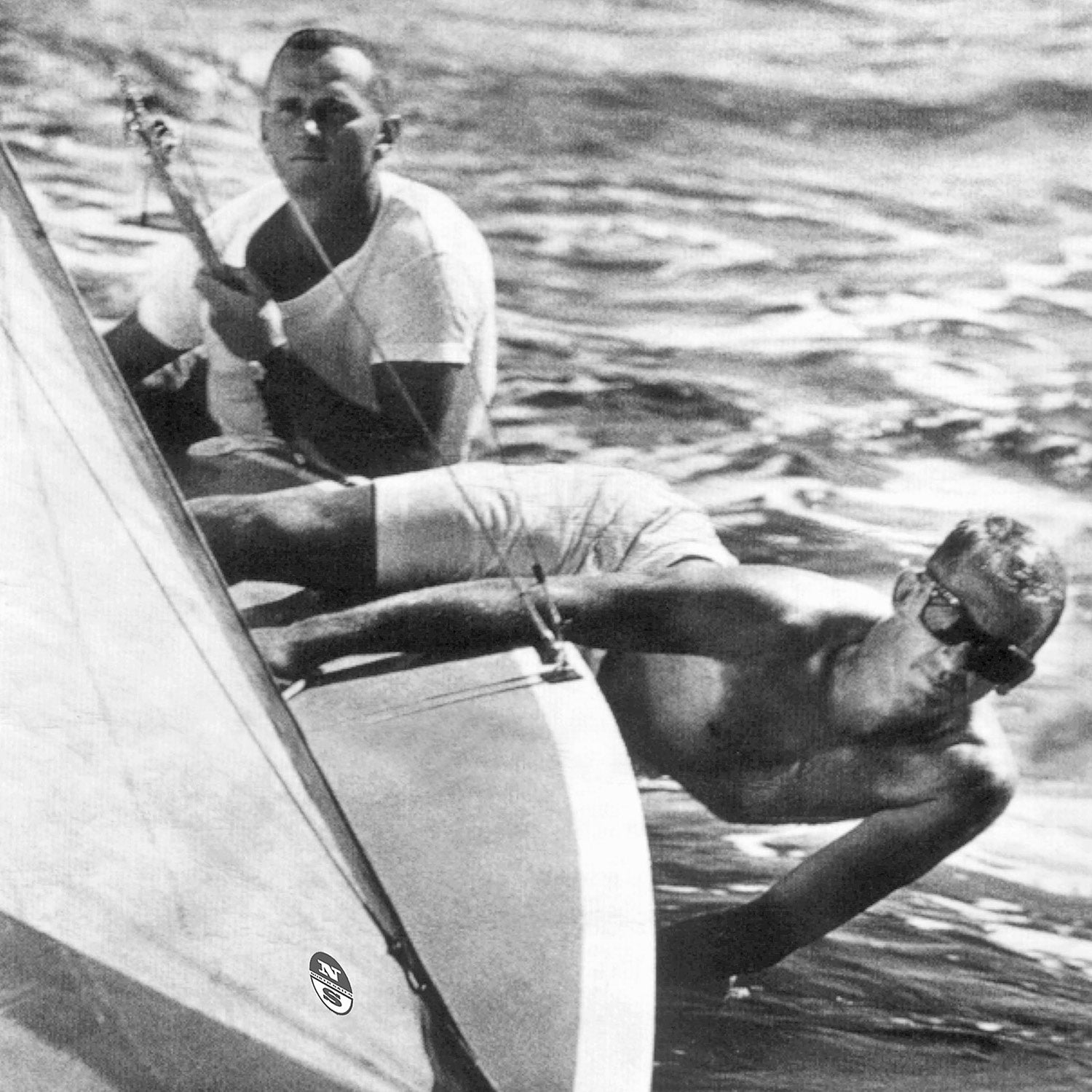
NORTH SAILS APPAREL
OCEAN INSPIRED. LEADING BY DESIGN.
Our sails make champions and our apparel is cut from the same cloth. Lowell North’s legacy lives strong in North Sails Apparel, which since 1989 has been designed and built so that nothing gets in the way of what’s important—taking on the sea, heading for the hills, or just navigating modern life.
For Performance Clothing the singular goal is to make the best foul weather sailing gear on the planet, while the Lifestyle Collections bring the spirit of the ocean to shore and city, combining classic Italian design with our rich sailing pedigree and environmentally responsible materials.
Our sails make champions and our apparel is cut from the same cloth. Lowell North’s legacy lives strong in North Sails Apparel, which since 1989 has been designed and built so that nothing gets in the way of what’s important—taking on the sea, heading for the hills, or just navigating modern life.
For Performance Clothing the singular goal is to make the best foul weather sailing gear on the planet, while the Lifestyle Collections bring the spirit of the ocean to shore and city, combining classic Italian design with our rich sailing pedigree and environmentally responsible materials.
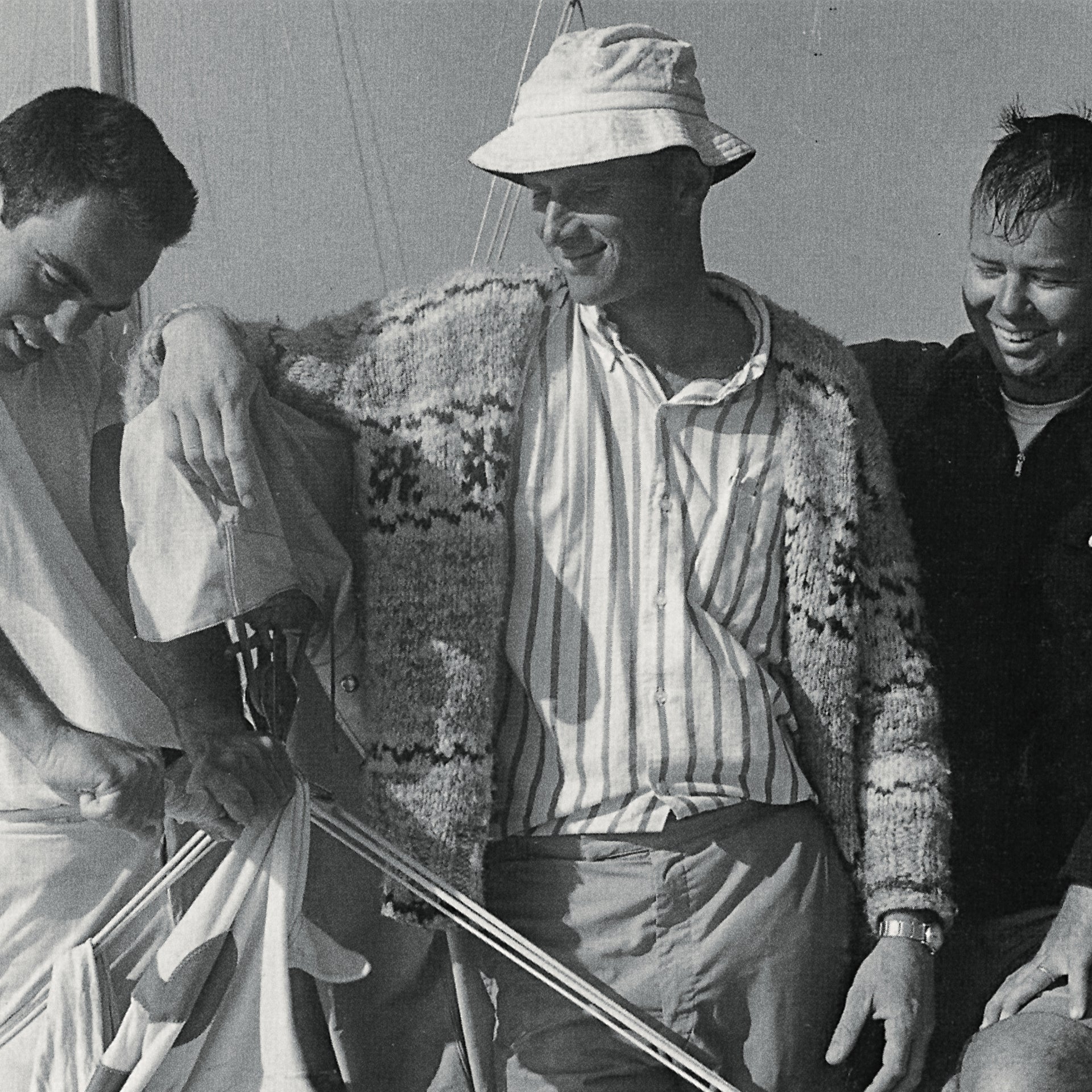
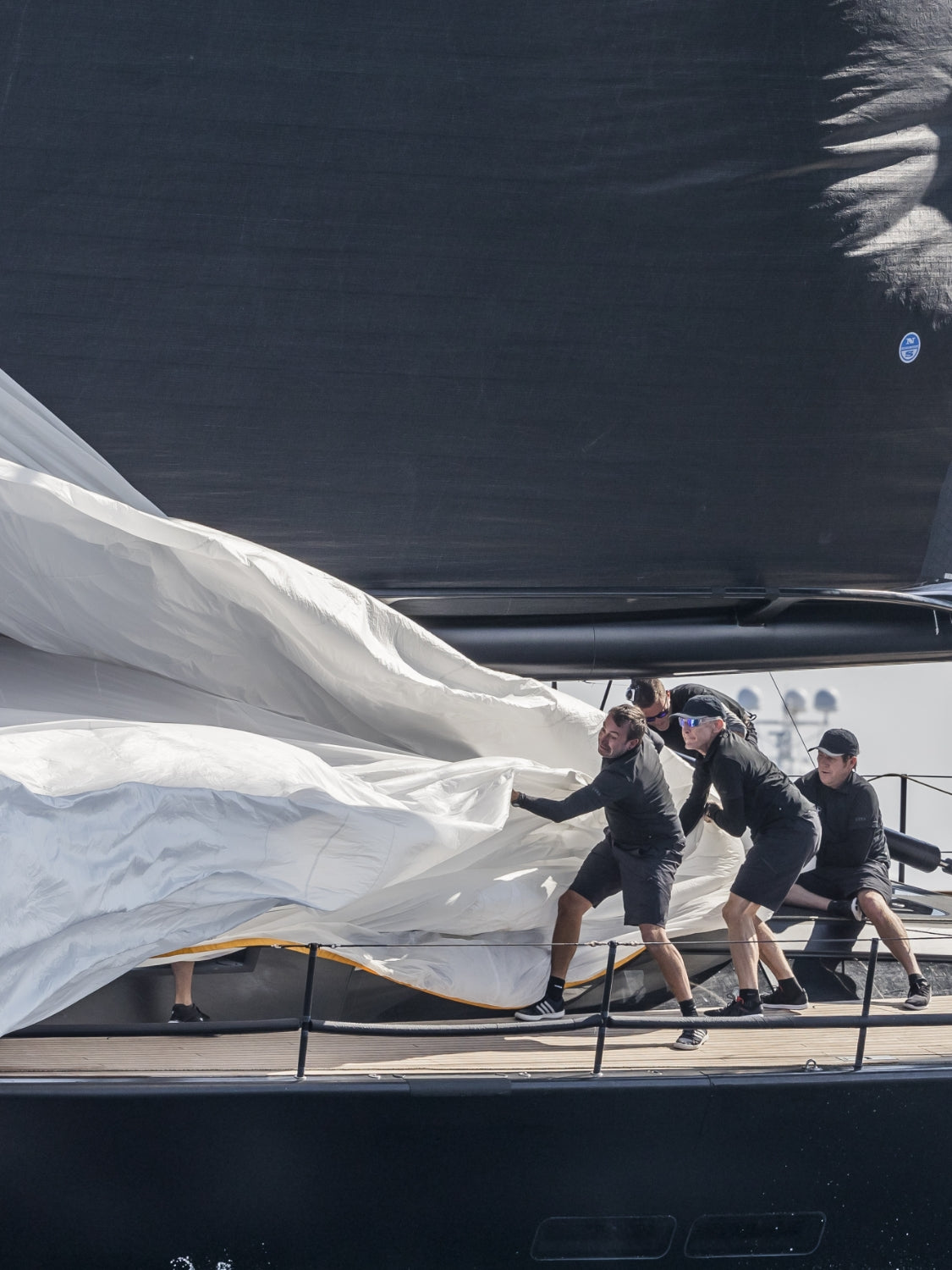
INNOVATION
WAY OUT IN FRONT
Lowell North took what he had learned from aerospace and applied it to sailmaking. Embracing technology and science, he changed how people sail, for ever.
Today, the push of the wind and the pull of the ocean still power our innovation. It has taken us to a place where we set the pace—literally and figuratively. For everyone who shares our passion for the ocean, way out in front is the only way.
Lowell North took what he had learned from aerospace and applied it to sailmaking. Embracing technology and science, he changed how people sail, for ever.
Today, the push of the wind and the pull of the ocean still power our innovation. It has taken us to a place where we set the pace—literally and figuratively. For everyone who shares our passion for the ocean, way out in front is the only way.
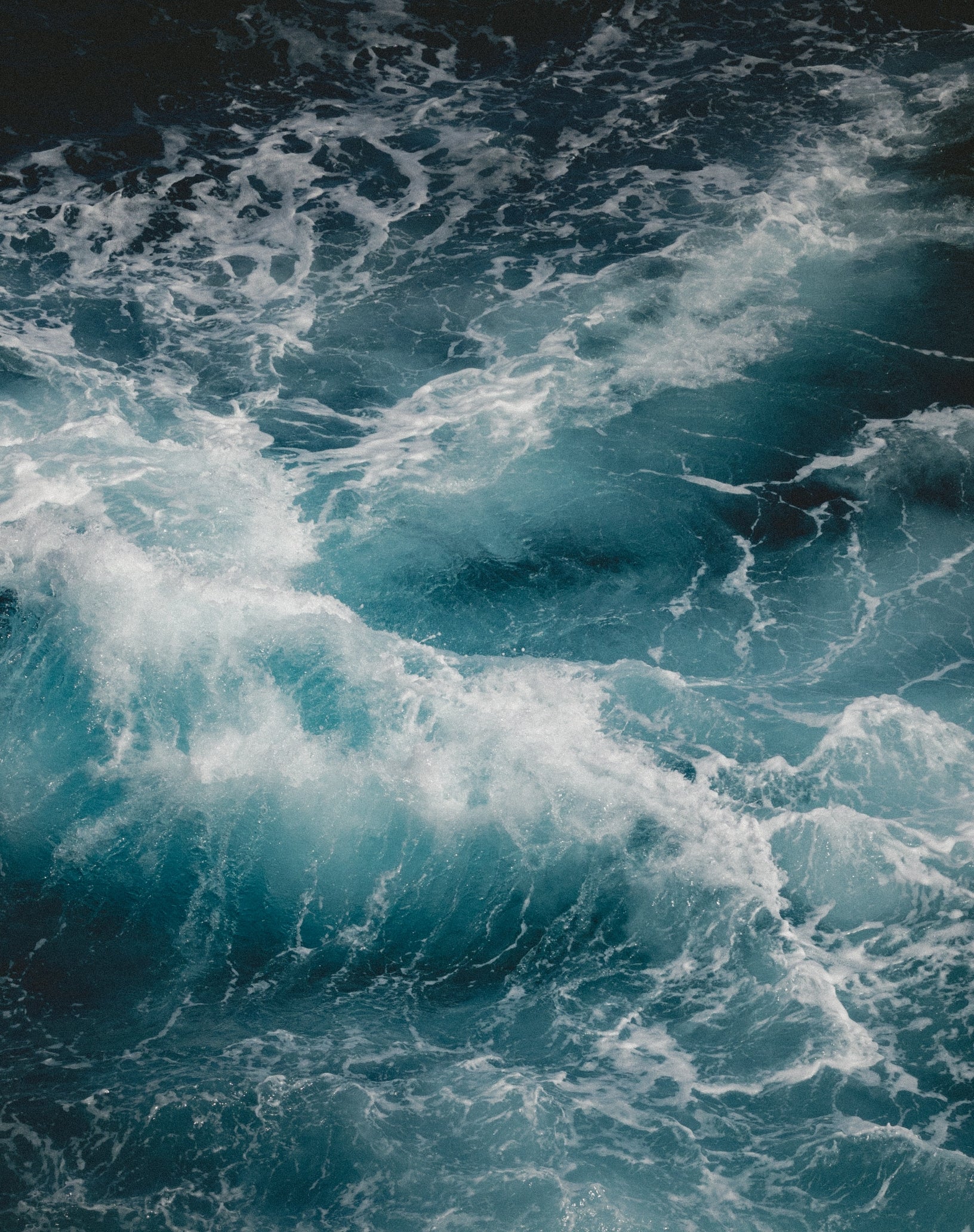
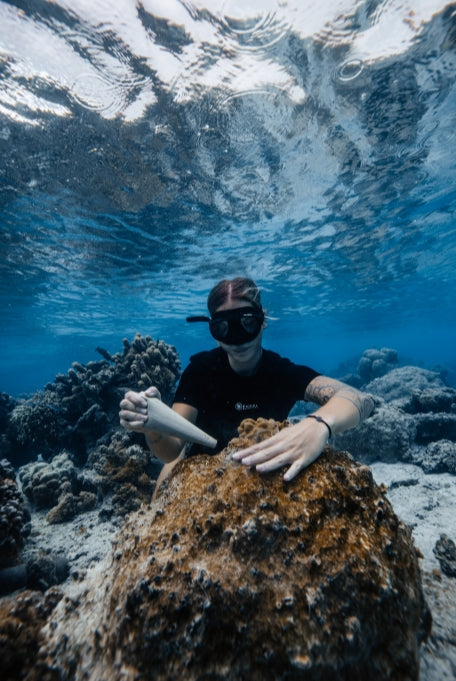
BECOMING OCEAN POSITIVE
Our journey to becoming the world's first Ocean Positive brand is well underway—and moving in the right direction. It's our pledge to renew and regenerate the ocean, and preserve it for future generations.
We are working hard to transform every part of North Sails, whether it's transitioning to at least 80% renewable electricity by 2030, using recycled and recyclable materials wherever we can, reducing waste in sailmaking and manufacturing, or partnering with ocean conservation programs all over the world. Together we can plot—and steer—the course to a cleaner, healthier ocean.
OUR FOUNDER
LOWELL NORTH
Lowell North (1929-2019) was an American sailor and sailmaker widely considered to be one of sailing's most influential figures. He was born in Springfield, Missouri, and grew up in California, where his passion for sailing really took off.
After launching a successful career as an aerospace engineer, his restless mind led him to strike out on his own, so he quit his job designing rockets and started North Sails in 1957. North's sails were used by many of the world's top sailors and teams, and he was particularly successful in the competitive field of ocean racing.
Today, North Sails is the world's leading and largest sailmaker known for innovative sail designs and cutting-edge technology.North himself was an accomplished sailor, winning the Star World Championship five times and competing in the Olympics. He was inducted into the America's Cup Hall of Fame in 1993 and the National Sailing Hall of Fame in 2011.
Lowell North (1929-2019) was an American sailor and sailmaker widely considered to be one of sailing's most influential figures. He was born in Springfield, Missouri, and grew up in California, where his passion for sailing really took off.
After launching a successful career as an aerospace engineer, his restless mind led him to strike out on his own, so he quit his job designing rockets and started North Sails in 1957. North's sails were used by many of the world's top sailors and teams, and he was particularly successful in the competitive field of ocean racing.
Today, North Sails is the world's leading and largest sailmaker known for innovative sail designs and cutting-edge technology.North himself was an accomplished sailor, winning the Star World Championship five times and competing in the Olympics. He was inducted into the America's Cup Hall of Fame in 1993 and the National Sailing Hall of Fame in 2011.
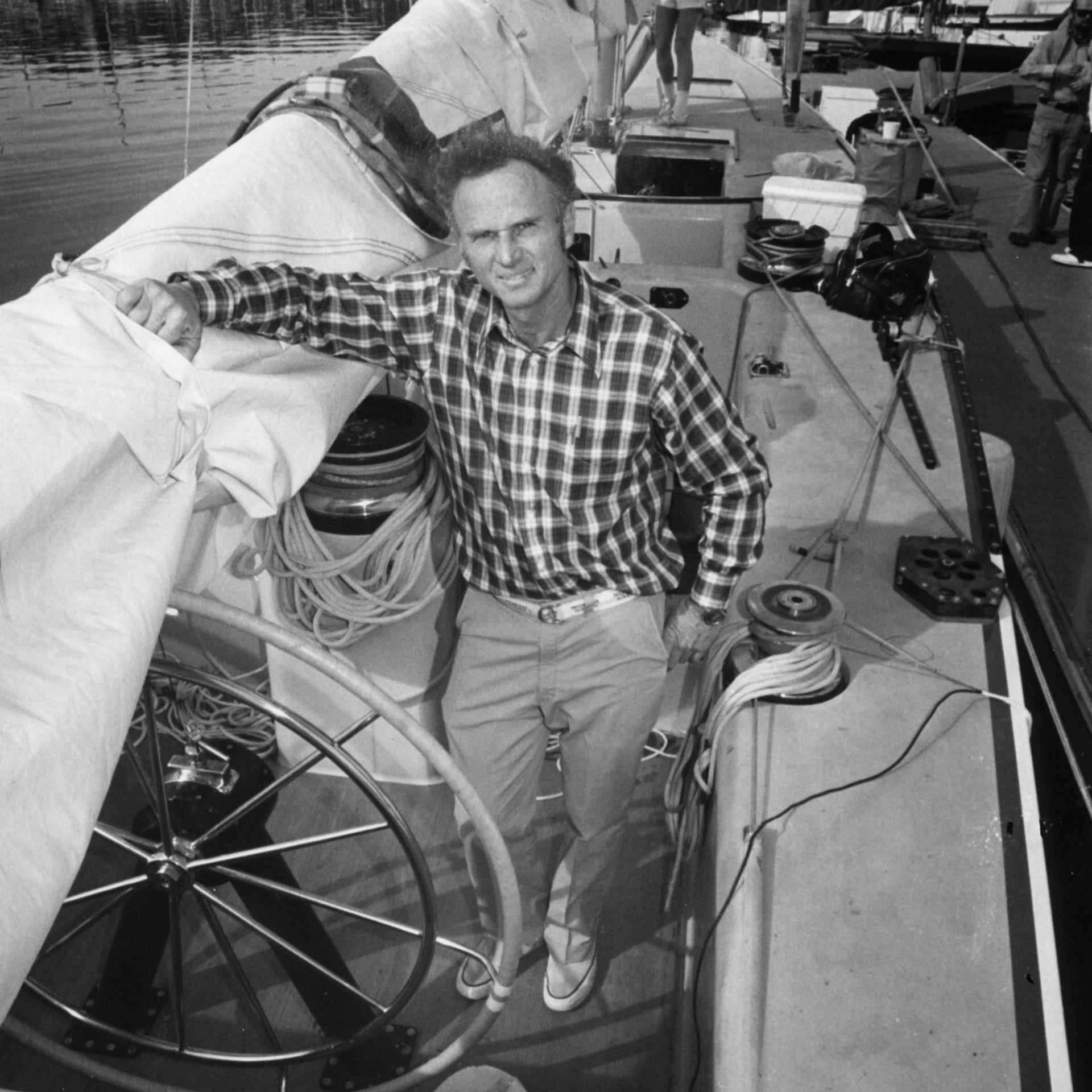
A TIMELINE OF
THE NORTH SAILS STORY
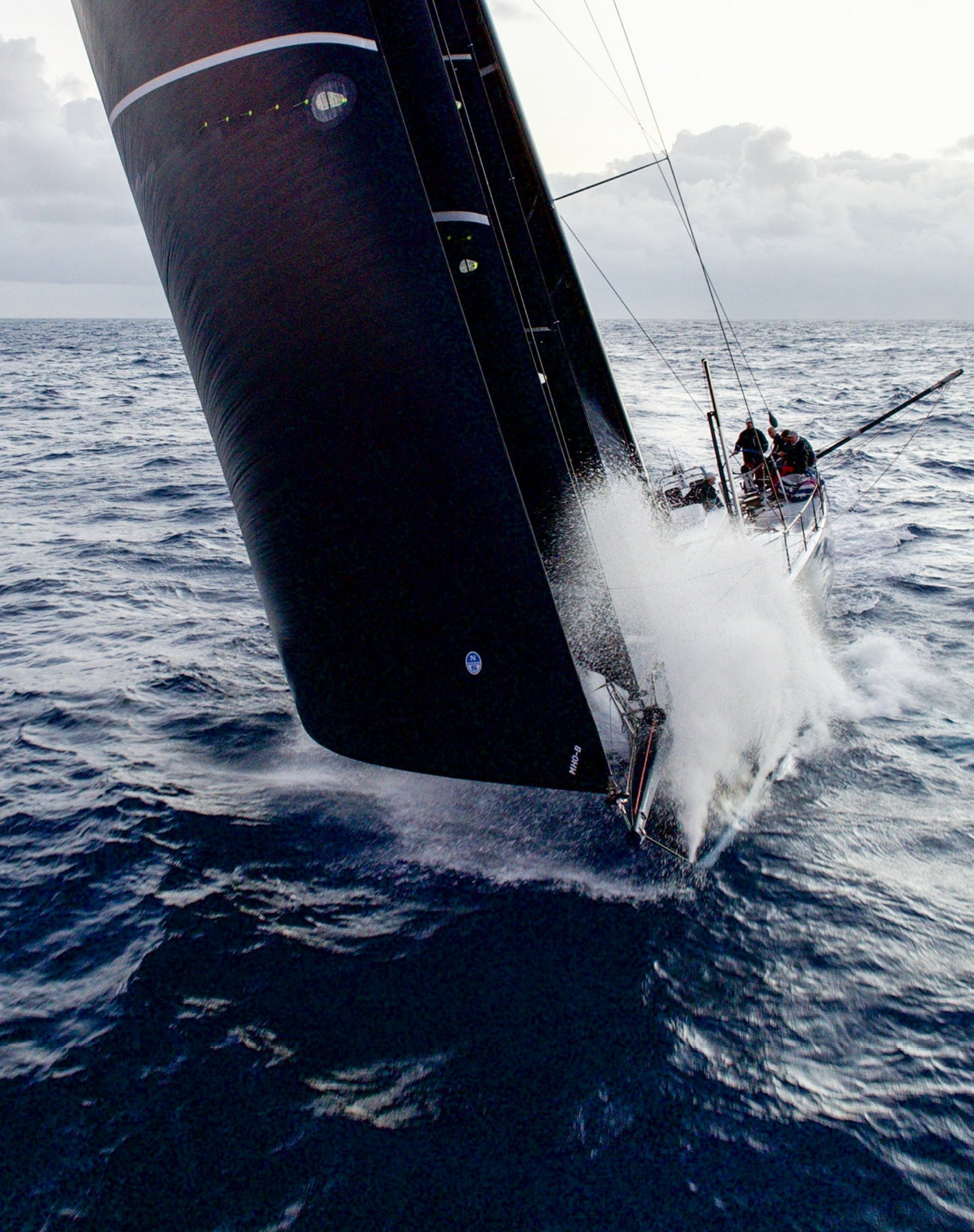
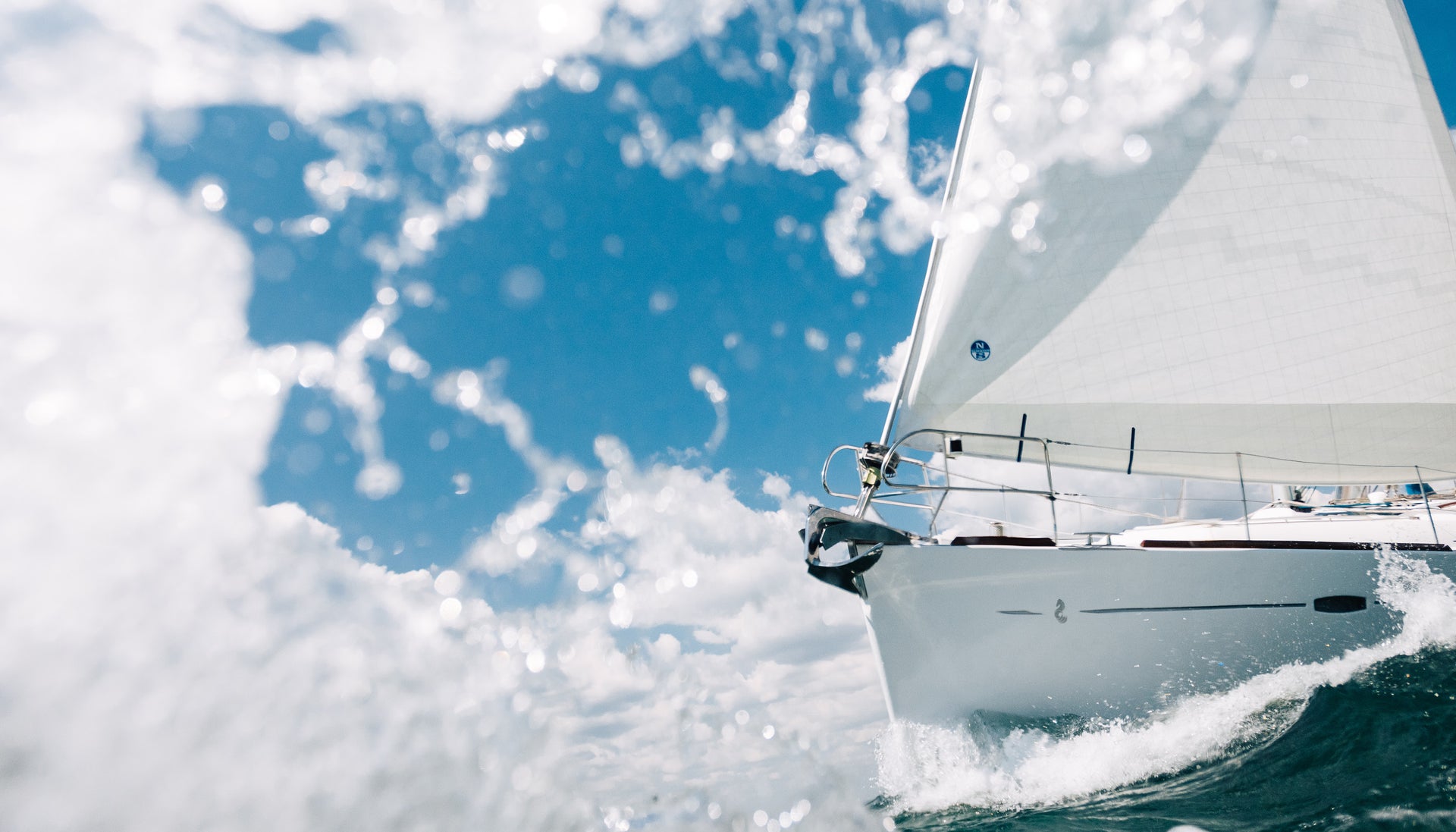
OUR WORLD
From a dusty room on San Diego's B Street Pier, Lowell North designed and built the Star boat mainsail that started everything.
Six decades later, North Sails has grown into the world’s leading sailmaker, with seven wholly owned manufacturing sites in six countries, 2,000 people powering the global business, and tens of thousands of sails hoisted in harbors and at sea around the world each year.
The family that includes North Sails, North Sails Apparel and North Sails Actionsports remains rooted in the core values that first led Lowell North to success: in-house analysis and development of materials, performance-led design, quality craftsmanship and customer service.
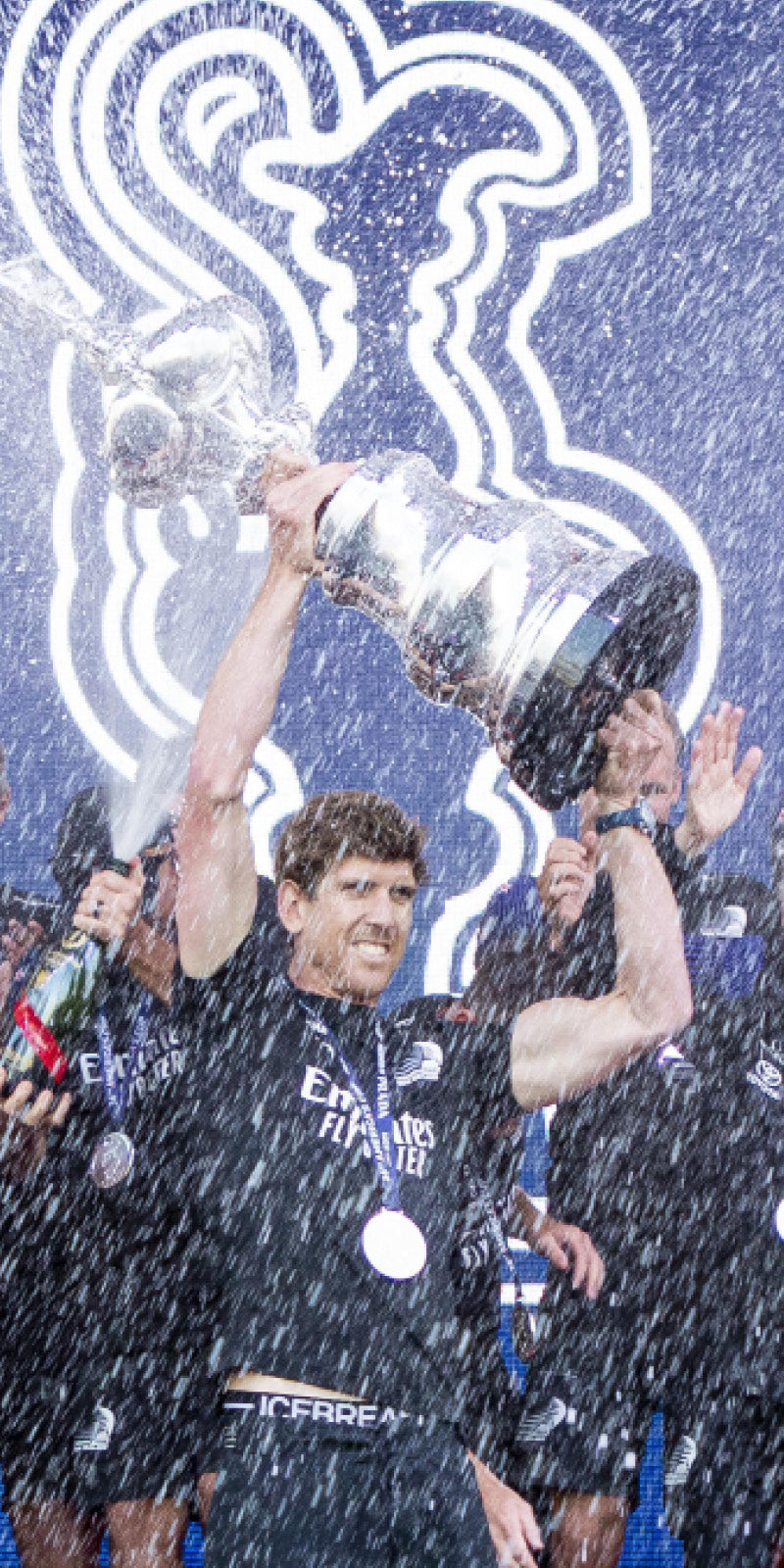
A SHARED STORY
NORTH SAILS & THE AMERICA'S CUP
The fastest boat consistently wins the America’s Cup, and we’ve consistently kept the secrets and built the sails that give teams the confidence boost of superior boat speed.
The fastest boat consistently wins the America’s Cup, and we’ve consistently kept the secrets and built the sails that give teams the confidence boost of superior boat speed.
